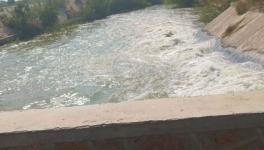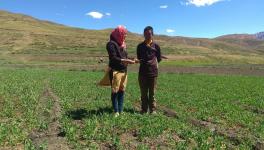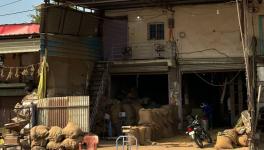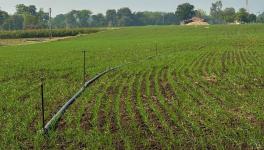Karnataka: Falling Reservoir Levels Put Farmers on Edge
File Photo.
Bengaluru: Ahead of the monsoon season, the water levels at various reservoirs are precipitously low. As per data provided by the Karnataka Water Resources department, the water level at Krishnaraja Sagar (KRS) reservoir in Mysore has fallen to 83.6 feet. If the level drops below 74 feet, the water will not be released for irrigation and will be saved as drinking water. Last year, the water level was 104 feet for the corresponding period. While the KRS Dam is a lifeline for farmers in Mysore and Mandya districts, it also supplies drinking water to Mysore and Bengaluru.
Similarly, the storage level at the Tungabhadra reservoir (in Vijayanagar) is at 3% of its capacity at the Full Reservoir Level (FRL). The Kabini reservoir (in Mysore) has live storage levels at 6% of its capacity at FRL. Last year the storage levels of the two reservoirs (in the corresponding period) were at 11% and 24% of their FRL, respectively. Among the 16 major reservoirs in the state of Karnataka, Kabini, KRS, and Tungabhadra reservoirs are at the lowest levels (when compared to their capacity at FRL).
Vasudev Meti, 52, a farmer and union leader, says that farmers have been complaining about the water shortage for irrigation. Speaking to NewsClick, he says, “Water shortage has always been a problem in Uttara Karnataka. That is why we only grow one crop in a year. During the rains, the reservoirs in the region are at full capacity. But, due to corruption, the excess water is released into Andhra Pradesh. Water is also sold to factories and the large steel plant in Vijayanagara. They receive more than they require. What will happen to farmers? The only solution now is to build more dams and reservoirs.”
Hariharan Chandrashekhar, 66, is a conservationist and a senior fellow of the Indian Green Building Council (IGBC). He says that along with a change in agricultural patterns, the health of the rivers must be restored. Speaking to NewsClick, he says, “The water scarcity is a story that will get worse in the years to come because the headwaters (or the upper riparian) of our rivers have degraded due to deforestation. The possibility of river-fed irrigation will reduce in the years to come. We have to promote water-efficient crops. The scientists at ICAR and ICRISAT must address the issue of crops like American Cotton that are water intensive. American seeds are very destructive in terms of the quantum of water they consume. In contrast, Indian variety cotton is grown on rain-fed irrigation. We have to look at our agricultural patterns. There is a deficit in pulses and oilseed production in India. Meanwhile, sugarcane production consumes 12000 litres of water/kg of produce. Paddy requires 3500 litres of water/kg of produce. Farmers are eating millets, but the urban demand for rice and sugar drives the market. We have to change our agricultural practices.”
Expanding on the issue of silt accumulation in reservoirs, he says, “The storage capacity of reservoirs has come down by 50% due to the formation of silt. Desilting also has to take place.”
Get the latest reports & analysis with people's perspective on Protests, movements & deep analytical videos, discussions of the current affairs in your Telegram app. Subscribe to NewsClick's Telegram channel & get Real-Time updates on stories, as they get published on our website.
























